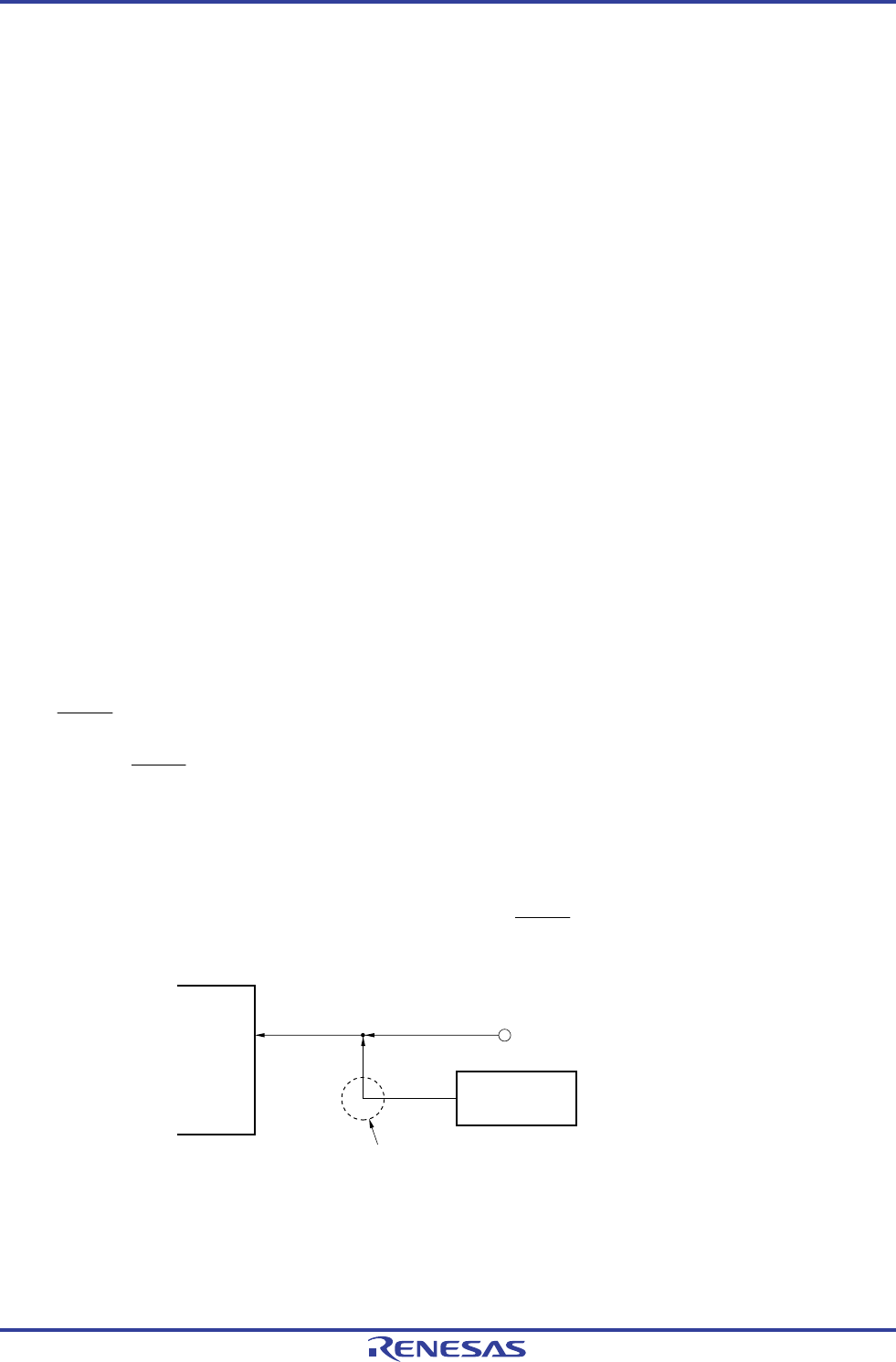
RL78/G1A CHAPTER 25 FLASH MEMORY
25.3 Connection of Pins on Board
To write the flash memory on-board by using the flash memory programmer, connectors that connect the dedicated
flash memory programmer must be provided on the target system. First provide a function that selects the normal
operation mode or flash memory programming mode on the board.
When the flash memory programming mode is set, all the pins not used for programming the flash memory are in the
same status as immediately after reset. Therefore, if the external device does not recognize the state immediately after
reset, the pins must be handled as described below.
Remark For the flash memory programming mode, see 25.4.2 Flash memory programming mode.
<R>
25.3.1 P40/TOOL0 pin
In the flash memory programming mode, connect this pin to the dedicated flash memory programmer via an external 1
kΩ pull-up resistor.
When this pin is used as the port pin, use that by the following method.
When used as an input pin: Input of low-level is prohibited for t
HD period after external pin reset release. However,
when this pin is used via pull-down resistors, use the 500 kΩ or more resistors.
<R>
When used as an output pin: When this pin is used via pull-down resistors, use the 500 kΩ or more resistors.
Remarks 1. t
HD: How long to keep the TOOL0 pin at the low level from when the external and internal resets end for
setting of the flash memory programming mode (see 29.9 or 30.9 Timing Specs for Switching Flash
Memory Programming Modes)
<R>
2. The SAU and IICA pins are not used for communication between the RL78 microcontroller and
dedicated flash memory programmer, because single-line UART (TOOL0 pin) is used.
25.3.2 RESET pin
Signal conflict will occur if the reset signal of the dedicated flash memory programmer and external device are
connected to the RESET pin that is connected to the reset signal generator on the board. To prevent this conflict, isolate
the connection with the reset signal generator.
The flash memory will not be correctly programmed if the reset signal is input from the user system while the flash
memory programming mode is set. Do not input any signal other than the reset signal of the dedicated flash memory
programmer and external device.
Figure 25-5. Signal Conflict (RESET Pin)
Input pin
Dedicated flash memory programmer
connection pin
Another device
Signal conflict
Output pin
In the flash memory programming mode, a signal output by another device
will conflict with the signal output by the dedicated flash memory
programmer. Therefore, isolate the signal of another device.
RL78 microcontroller
R01UH0305EJ0200 Rev.2.00 807
Jul 04, 2013


















